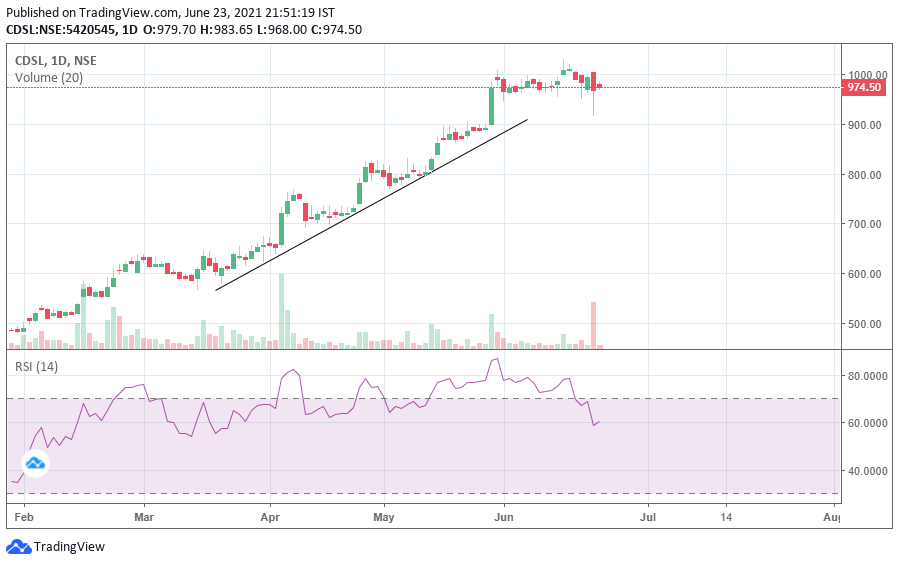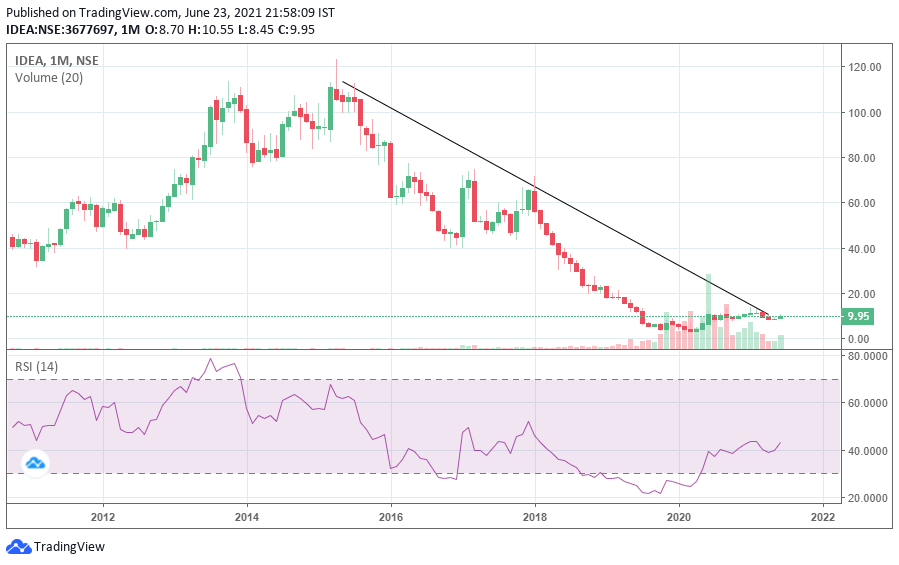Market Trends – Firstly, there are three types of market trends that can be seen in the stock markets. The trends can only be observed once the action has already taken place and therefore it is very difficult to predict them. A phrase “Trend is your friend” often used by traders in the stock market, we will see its implications in the texts to come.
- Uptrend
- Downtrend
- Sideways
Definitions of Market Trends
When market up – trends
As the name suggests an uptrend is the continuation pattern of rising prices. We can see an upward movement of value in an asset if the asset in observation is trending. A peculiar characterisitc of an uptrend is the formation of higher highs and lower lows.

When market down – trends
A downtrend is a continuation pattern of falling prices or value of an asset. Importantly, as an investor one should follow the downtrend more carefully. Because wealth is created when buying is done at a lower price and selling is done at a higher price. A characteristic of a downtrend is lower highs and lower lows.

When market is confusing – Sideways !
A zone of indecission or distribution where an investor makes up the mind is known as sideways.
There can be two scenarios in the sideways market for instance, an investor can take a fresh entry into an asset or she/he can liquidate an asset. The decision taken by an investor in the sideways market is very important in deciding the uptrend and the downtrend.
Finally, a sideways market will determine the continuation pattern of an uptrend or downtrend. For example, if new investor takes fresh entry in the sideways market. The markets will reach new highs. If existing investors liquidate (meaning sell) their assets then the markets will fall down.
Trend Reversal
A trend revesal is indicative of the change in sentiment or value of the underlying asset. For instance, at the peak of an uptrend we will see some distribution, similarly at the bottom of a downtrend we can observe some distribution.
How to identify trend reversal patterns?
The main objective of identifying trends is to wait and watch the price movement so that we can benefit from it. Once the pattern is identified, then we need to make a decission based on the following things.
- Duration of our Investment
- The return expectation
- Type of Financial Instrument
- The stability factor
- Strength of the pattern
Once we establish these things then we are going to decide our interval for observing the charts, as well as the amount of investment we are willing to put at risk. The shorter the duration of the investment, the riskier the asset selection. The greater the expectation of returns the greater is the inherent risk in an asset. Therefore for an investor spotting the market trends is very important.
The difference between trading and investing is as follow
| Attribute | Trading | Investing |
| Duration Time | Intraday or positional | Minimum of 3 Years |
| Risk | Very high | Moderate to low |
| Volatility | High | Independent of volatility very low |
| Objective | Scraping gaining 1% – 2% | Capital protection and wealth creation |
| Succeptibility | News flow + Non news information | News flow |
Why do we use market trends?
Market trends are used to spot the price action in the market. It is an indicator of where the smart money is making the move. The characteristic of the market is to always go up this is so because the exchange creates a list of stocks also known as the Index. In India, this index is known as Nifty 50 for NSE and BSE Sensex for the Bombay stock exchange. These indices are periodically updated and new companies are added from time to time. In the long run, we will find that the market trends of the index is always up.



